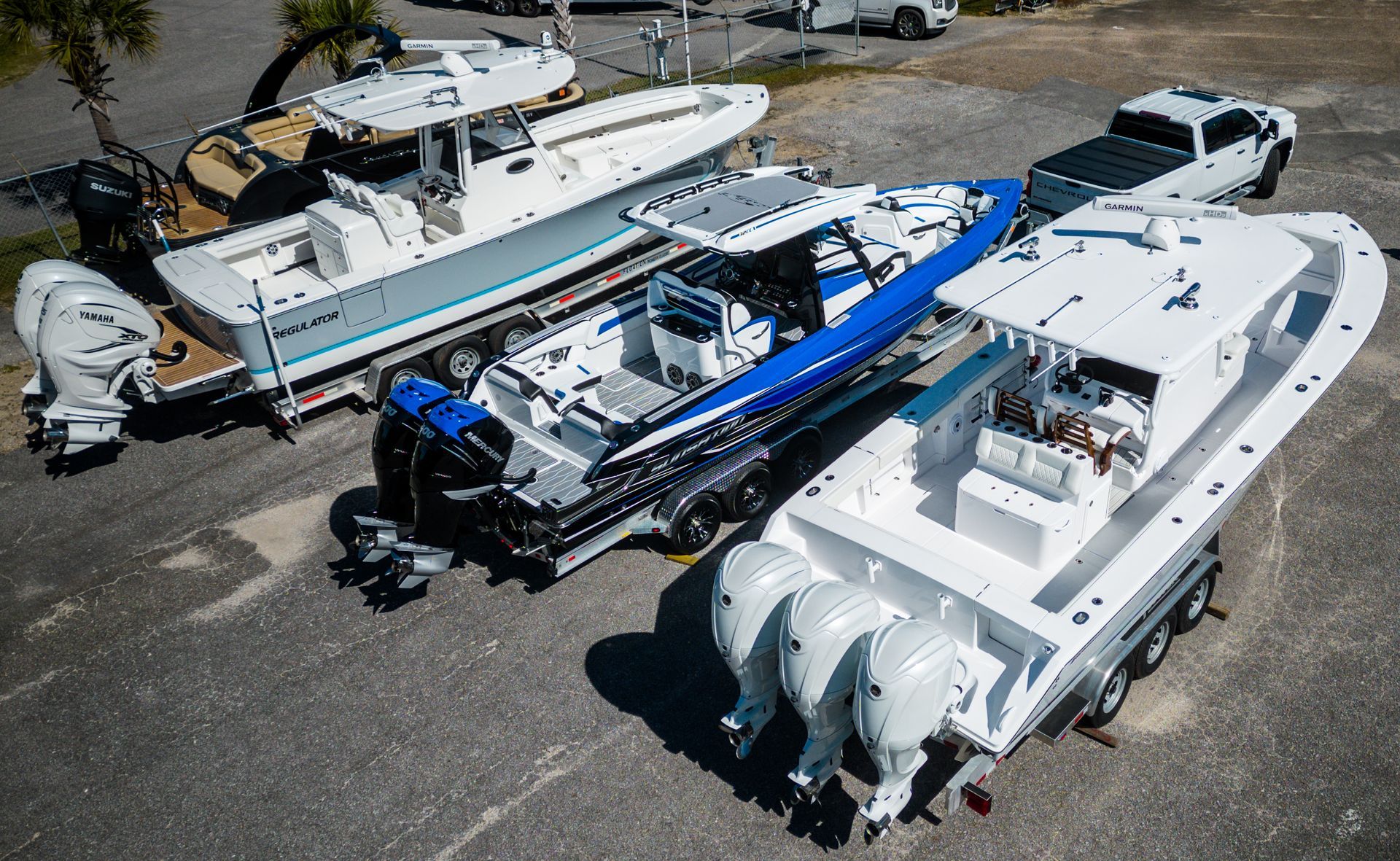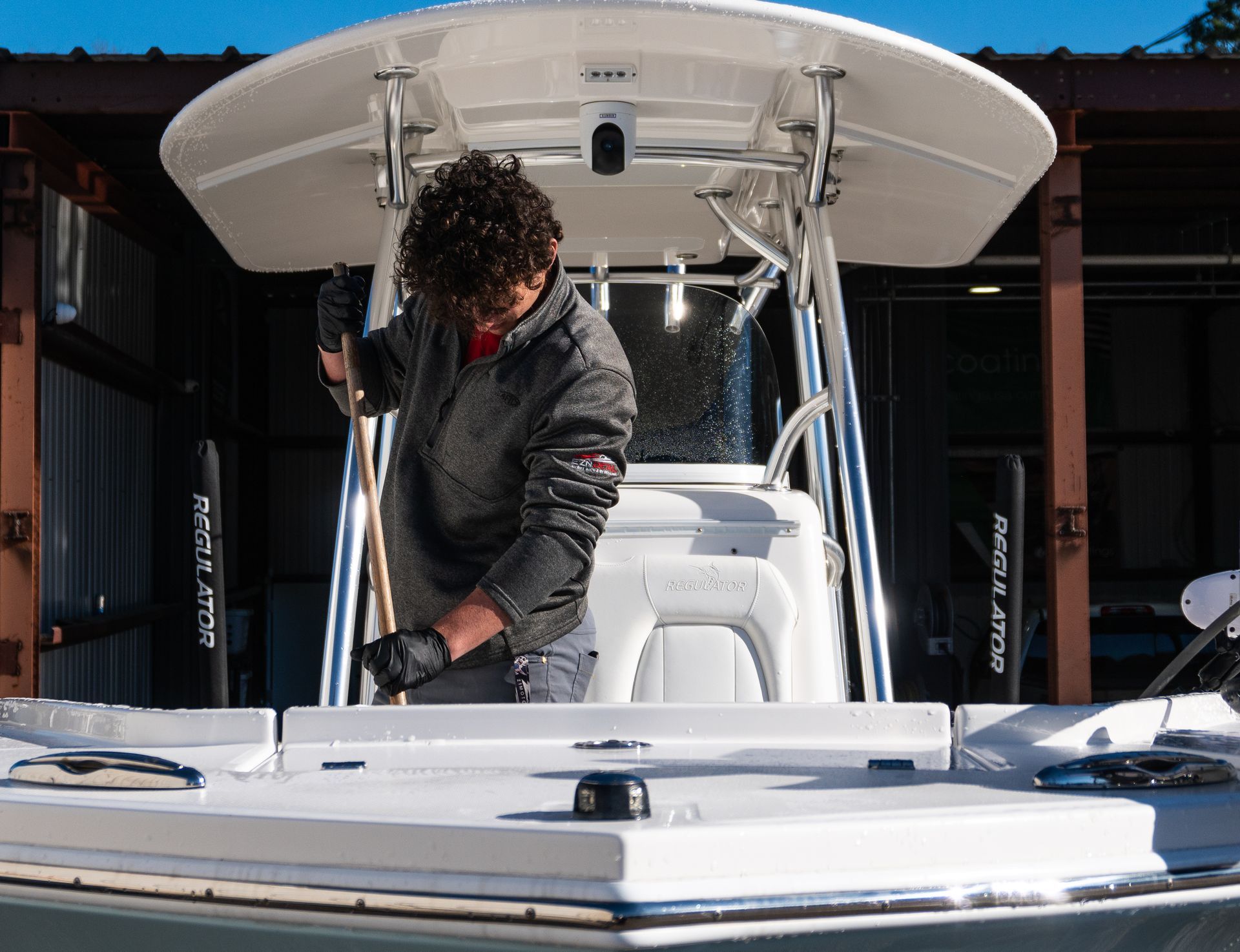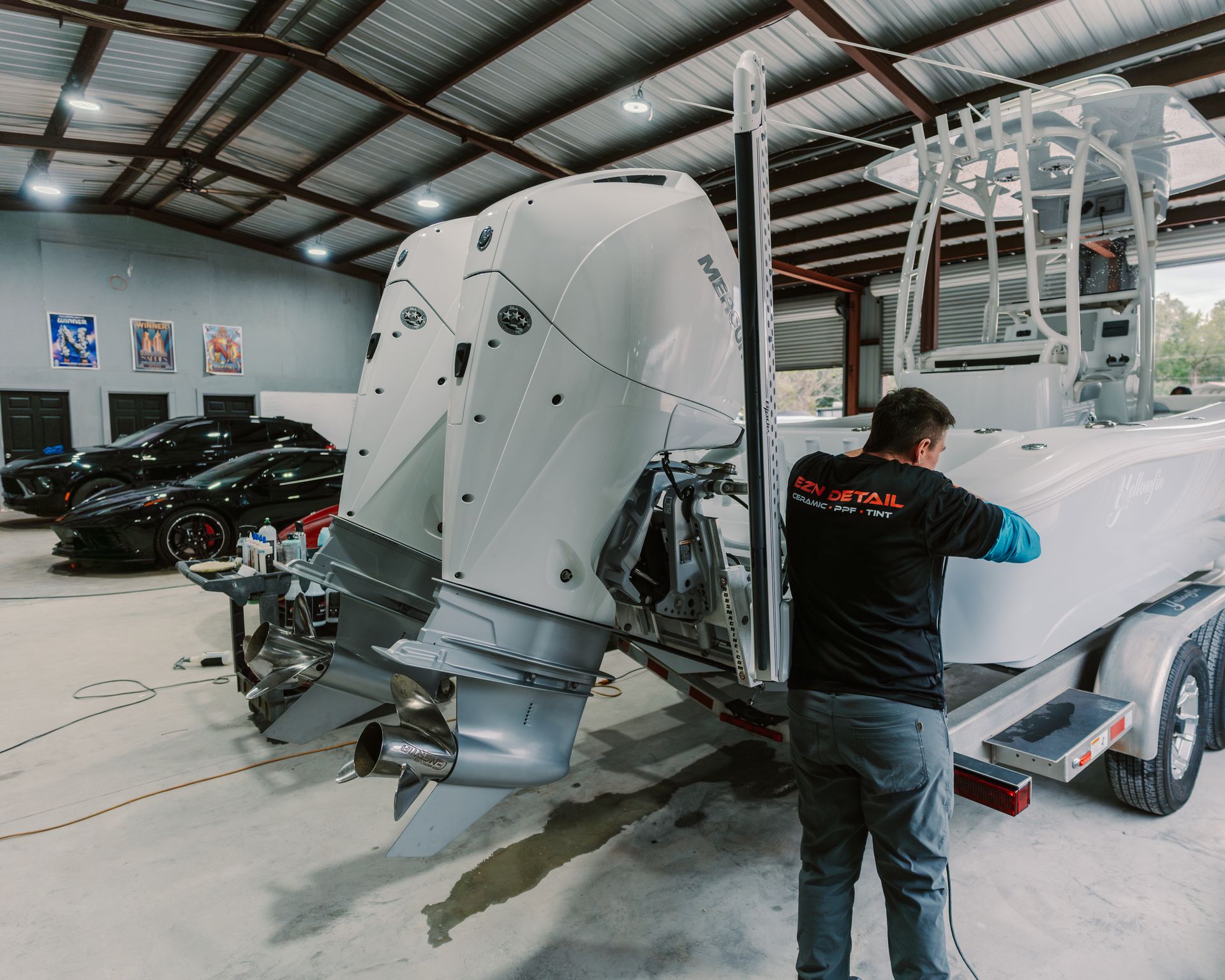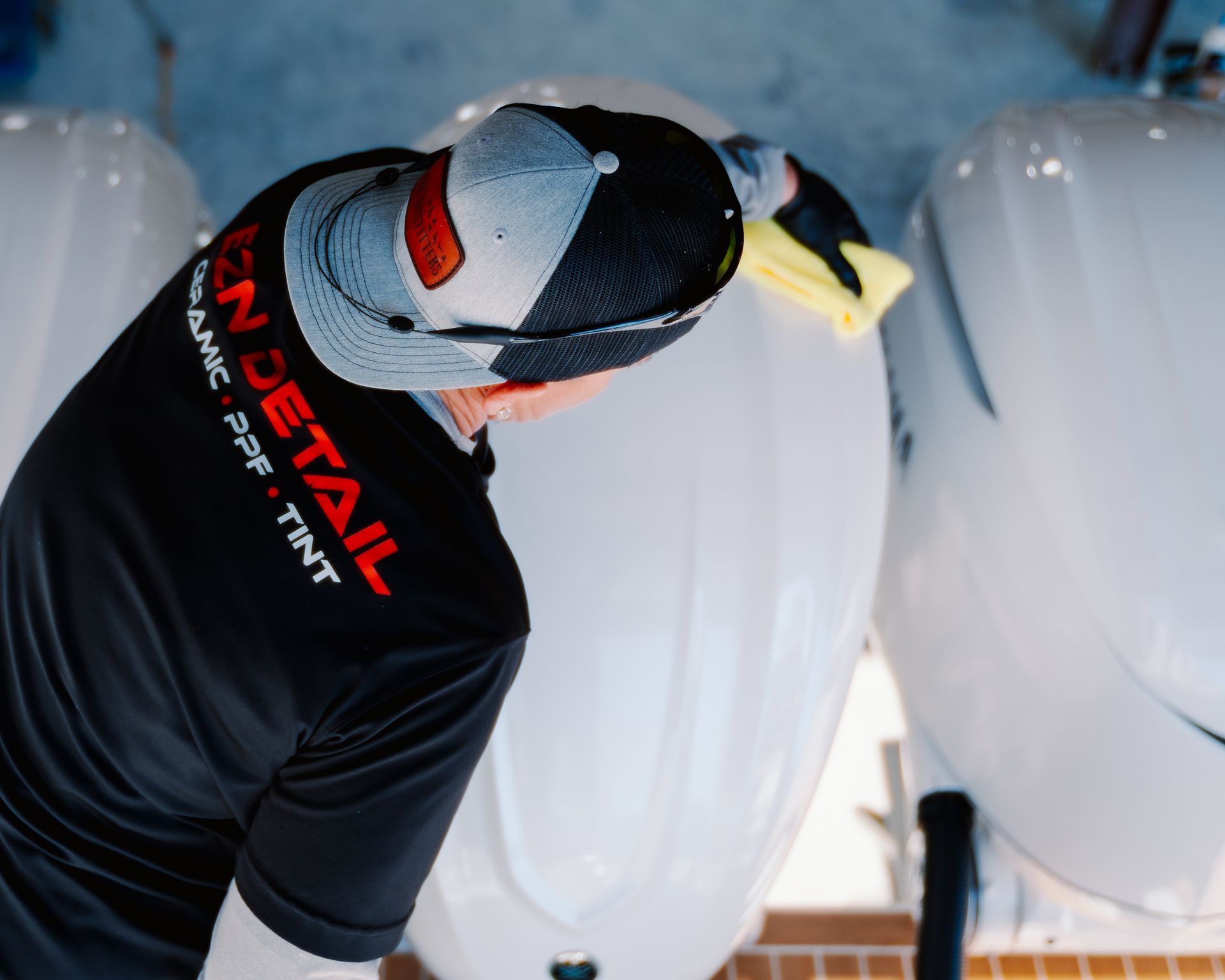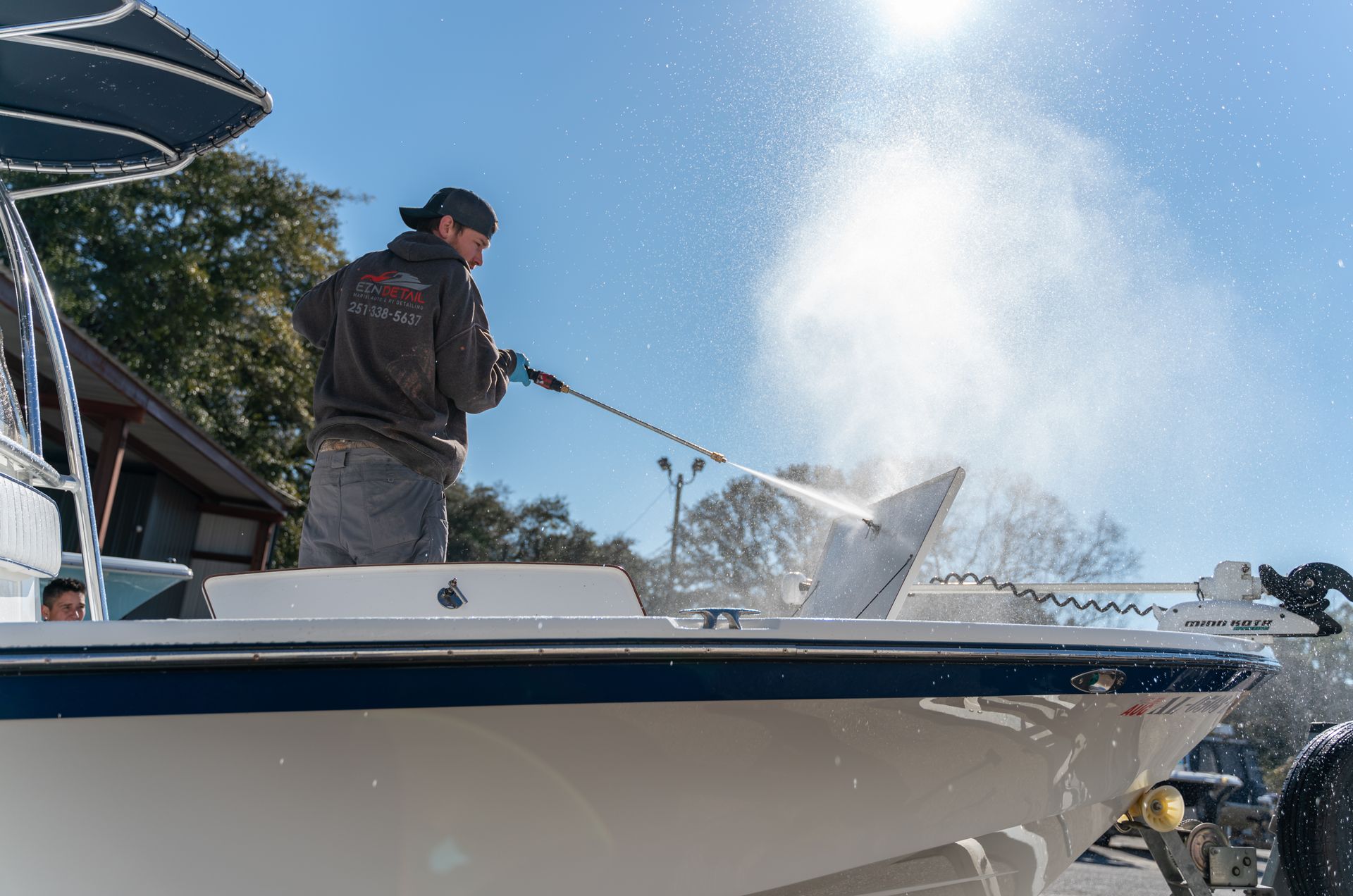What Saltwater Does to Your Boat: The Real Cost of Neglecting Detailing
GET INSTANT PRICE (251) 338-5637When you think about owning a boat, the excitement of weekends spent on the water usually comes to mind. However, neglecting basic maintenance can lead to serious problems, particularly if your boat spends time in saltwater. Salt can silently erode your vessel's materials, resulting in far more costly repairs than you might anticipate. Regular upkeep and detailing are not just good practices—they're essential for preserving the value and integrity of your boat. After spending considerable time exploring the impacts of saltwater exposure, it became clear that staying ahead of these potential issues isn’t just wise; it saves boat owners from financial headaches down the line. Let's dive deeper into how saltwater affects your boat and why proactive care is paramount.
Saltwater exposure can lead to significant oxidation of a boat's gel coat, ultimately compromising its protective surface quality and risking structural integrity. Neglecting routine maintenance can result in restoration costs ranging from $4,000 to over $15,000, while regular detailing services generally only cost between $500 and $1,500 annually, underlining the financial importance of timely upkeep.
Corrosive Role of Saltwater
Saltwater, composed predominantly of sodium chloride, is notorious for its ability to wear down and corrode materials used in boat construction. Unlike freshwater, which may allow boats to flourish with minimal maintenance, saltwater presents a far more insidious threat. Its abrasive nature leads to oxidation, especially on aluminum and other metals, creating vulnerabilities that can escalate if left unchecked. For instance, studies reveal that aluminum can corrode at rates of approximately 0.1 to 0.2 mm per year when exposed to saltwater. This means that without regular upkeep, even minor damage could lead to critical structural failures over time.
It's important to note that this corrosion isn't merely aesthetic—rust and deterioration compromise not just the appearance but the very safety and seaworthiness of your boat.
Over time, oxidation creates porous areas on your boat’s gel coat, allowing water intrusion that can lead to extensive internal damage. Such risks highlight the importance of immediate post-use care; it's best practice to flush the engine and rinse off exterior surfaces after every outing in saltwater. This simple act can save you thousands in restoration costs down the line.
To put these costs into perspective: while maintaining a boat can range from $500 to $1,500 annually for light polishing and waxing, neglecting basic maintenance can result in repair expenses skyrocketing to $4,000 or more if severe oxidation occurs.
But how can boat owners effectively combat these issues? One practical method is through routine inspections using gloss meters or chalk tests to assess the condition of the gel coat. Identifying wear early not only extends the lifespan of your boat but also minimizes costly interventions later if extensive corrosion is allowed to set in.
As we consider strategies for prevention, it becomes increasingly important to understand how metal components are affected by saltwater exposure. Maintaining awareness of these impacts will empower boat owners to take proactive measures that protect their assets.
Boat Detailing: A Preventive Strategy
Detailing your boat isn’t just about creating an eye-catching shine; it’s an essential practice that helps you protect your investment from the harsh realities of saltwater exposure. Monthly maintenance and diligent care can save you significant sums in repairs down the line. For instance, a comprehensive detailing session that includes a thorough wash and protective wax application costs around $500. While this may seem like a substantial upfront expense, it pales in comparison to the $4,000 to $15,000 you could face if oxidation or other damages take hold due to neglect.
Monthly Maintenance
Each month, set aside time for routine upkeep by washing the exterior with mild soap and fresh water. This act removes salt deposits, grime, and pollutants that can erode the gel coat over time. After thoroughly drying the surface, apply a high-quality wax designed specifically for marine use. The wax acts as a barrier against UV rays and saltwater corrosion—consider it to be sunscreen for your boat, shielding it from harmful elements while ensuring longevity.
If you choose to hire professionals for this service, not only will you receive expert care but also the peace of mind that comes with knowing the job is done right. Professional detailing offers careful attention to detail and incorporates enhanced techniques that homeowners may not achieve on their own.
End-of-Season Detailing
At the end of the boating season, commit to another level of detail by investing in a comprehensive cleaning for approximately $1,000-$1,500. This goes beyond just polishing; include oxidation removal and deep cleaning to ensure every crevice is free of salt buildup. Professionals add durable sealants at this stage, which provide maximum protection for the upcoming season. These coatings help preserve your boat's finish and structure against nature's relentless beatings year-round.
It’s noteworthy that skipping this detailed session can lead to severe oxidation problems that could compromise the boat’s structural integrity and result in extensive repair costs—think thousands of dollars spent on solutions that could’ve been prevented with regular maintenance.
Establishing these routine practices not only preserves your boat’s aesthetic but also ensures its seaworthiness and safety over time. By adopting a proactive maintenance strategy, you can ensure your vessel stays in top condition for many years of enjoyment on the water.
Keeping all these maintenance considerations in mind, it becomes crucial to explore protective measures to safeguard your boat from the elements. Let's transition now into examining effective options available to enhance durability and longevity.
Protective Coatings and Treatments
Protective coatings serve as a vital shield for your boat, safeguarding it against the relentless assault of saltwater, UV rays, and other environmental factors. These coatings create a formidable barrier that helps maintain the integrity of your boat’s surfaces. One prominent product in this category is ceramic coatings. These advanced solutions use nanotechnology to bond seamlessly with the surface, forming a resilient, long-lasting protective layer that stands up to various marine challenges.
The benefits include preventing the buildup of harmful contaminants like salt deposits and algal growth, which can quickly degrade your boat’s finish if left unchecked. If you’ve ever spent hours scrubbing away at stubborn stains after a day on the water, you’ll know how much effort goes into maintaining a clean surface without protection. Investing upfront in these coatings gives you aesthetic advantages and drastically cuts down on cleaning time and costs over the long run.
It's worth noting that these treatments significantly reduce maintenance costs. Over time, using protective coatings means fewer repairs due to corrosion or damage caused by harsh elements. It’s a proactive strategy that maintains appearance while protecting your investment. Imagine heading out for a fishing trip or leisure sail without worrying about whether your vessel will weather the saltwater well—this peace of mind is invaluable.
Understanding these protective measures helps you see the broader implications of neglecting proper care for your boat. By considering how these coatings influence maintenance and longevity, you prepare yourself for discussions on how neglect could translate into unexpected costs and issues further down the line.
Expensive Repairs and Part Replacement
Without regular maintenance, boats may fall victim to various deterioration issues that demand costly repairs. These aren't just minor fixes like replacing a light bulb; we’re talking about significant repairs that can drain your wallet. Commonly, hull restorations and engine overhauls present themselves as some of the largest expenses a boat owner might encounter. Ignoring simple maintenance tasks often leads to woes requiring urgent attention, not to mention the unsightly appearance of your vessel.
Hull Repairs
A prime example is hull repairs caused by severe oxidation, which can set you back anywhere from $10,000 to $20,000. The Marine Mechanics Institute emphasizes how neglect in this area can escalate quickly. For instance, I recall hearing a story about a boat owner who spent nearly $15,000 on extensive hull repairs after four years without annual detailing. One wouldn't expect such astronomical figures merely from an oversight in routine care!
Beyond hull repairs, parts replacement warrants equal attention. People often neglect engine components until they start malfunctioning, which can result in significant costs. An engine overhaul could easily reach beyond $5,000, particularly when combining labor costs with the price of new parts. This is an area where prevention is undoubtedly cheaper than remedying deep-seated problems.
All these expenses add up and threaten not only your budget but also the integrity of your investment. Looking ahead, it's crucial to understand what happens when maintenance is neglected, especially concerning potential impacts on value and future resale considerations.
The importance of consistent maintenance can't be understated; safeguarding against these expenses ensures that you enjoy your boat for many seasons to come without the fear of sudden financial pitfalls in repairs or part replacements.
The Long-Term Effects of Saltwater
Long-term exposure to saltwater wields a powerful toll on boats, often resulting in damages that become increasingly expensive and time-consuming to rectify. When a boat is repeatedly subjected to saltwater without proper maintenance, the degradation process becomes starkly visible. For example, untreated fiberglass surfaces can exhibit osmotic blistering after just a few years in salty conditions. This means that small blisters filled with water begin to form beneath the gel coat, leading to deeper structural issues that jeopardize the vessel's integrity.
Osmotic blistering is not just unsightly; it can invite significant repair costs down the line.
One of the most severe consequences of salt exposure is its impact on the metal components of a boat. Salt accelerates corrosion rates by up to ten times compared to freshwater, especially in metals like aluminum and steel. As these materials corrode, they weaken and become susceptible to fatigue, which can lead to catastrophic failures if left unchecked. These vulnerabilities can manifest as cracks or breakages in essential parts such as the hull or motor mounts, ultimately endangering both the vessel and its passengers.
Regular inspections are crucial not only for detecting visible signs of wear but also for catching potential issues before they develop into larger problems. A routine maintenance schedule—cleaning after each use in saltwater, followed by periodic inspections—can significantly extend your boat’s life. This simple diligence aids in preserving protective coatings, which, if neglected, will degrade and require costly restoration efforts.
Among the most impacted areas are the engine and hull, where neglect can compound damage exponentially.
The engine is another crucial area where saltwater can cause significant damage. If salt particles infiltrate engine components without proper flushing post-use, they can lead to serious mechanical issues over time. Salt buildup within cooling systems can corrode vital parts and restrict coolant flow. Without proper maintenance, such accumulation may cause overheating or even engine failure—a situation no owner wants to face.
The hull bears the brunt of external environmental factors, too. Salt deposits left on the hull can lead to staining and etching of the surface finish. Notably, these corrosive effects expand beyond just aesthetics; if untreated stains penetrate deep into the gel coat, repairing them could escalate into major restoration work costing thousands of dollars.
To illustrate this point further, let's consider a real-world scenario: a well-loved 25-foot sailboat neglected for three years showed extensive rusting and chalky surfaces upon inspection due to prolonged exposure to saltwater conditions. The estimated repair costs reached upwards of $6,00, all necessary because proactive maintenance was not performed.
Degradation of Interior Surfaces
Saltwater can wreak havoc on the interior of your boat just as it does on the exterior. While we often think about the hull and engine taking the brunt of exposure, moisture infiltrates every nook and cranny, leading to several potentially costly issues. Mildew thrives in damp environments and can proliferate rapidly in a salty atmosphere. According to industry standards, mold growth can increase by as much as 70% in saltwater settings compared to freshwater, making it essential to address this threat preemptively.
The presence of moisture doesn't just stop at unsightly mildew; it also significantly affects upholstery materials and electronics. Upholstery materials may experience an astonishing 50% increase in wear and tear when exposed to saltwater, meaning replacing or repairing these items can become a regular expense if mitigation efforts are neglected. Thus, routine cleaning evolves from minor inconveniences into major financial burdens.
Moisture Control
To combat this persistent issue, employing moisture control techniques becomes paramount. Using desiccant packs or moisture absorbers can work wonders in keeping those damp conditions at bay and preserving the delicate interiors of your vessel. These simple yet effective tools draw in moisture from the air and help inhibit environments where mold and mildew thrive.
More importantly, failing to actively manage interior moisture could lead to lasting odors and a shortened lifespan for vital electronic equipment often housed below deck. Neglecting such details might seem trivial at first glance, but they add up quickly; repair costs for electronics affected by mildew can skyrocket, potentially leading to thousands of dollars depending on the extent of damage.
Consistent upkeep involving thorough detailing and careful attention to interior maintenance pays off in various critical ways—less odor, more comfort during voyages, extended lifespan of materials, and ultimately less money spent on repairs down the line. With proactive measures in place, you can ensure that your boat stays in excellent condition while prepared for future adventures on the water.
Maintaining Your Boat for Longevity
Regular and thorough maintenance is crucial in combating the damaging effects of saltwater. It's not just about keeping your boat shiny; it's about preserving its functionality and ensuring it operates safely and efficiently for years to come. Neglecting maintenance can lead to deterioration that may require extensive repairs and significantly affect your boating experience. No one wants to cut a trip short because of avoidable machinery failures or safety concerns.
Start with regular inspections of your boat's critical systems, including the engine, electrical components, and hull integrity. Make it a habit to conduct checks after every use, particularly following a saltwater outing, as salt can cling to surfaces and corrode materials if left unattended. By adhering to this routine, you can prevent potential problems from escalating into costly repairs or hazardous conditions.
Alongside inspections, consistent cleanings are essential. Implement a regimen that includes washdowns after every saltwater outing to remove salt residue. A weekly wash helps prevent build-up that can cause lasting harm to metal components and finishes. From my experience, I find it best to use fresh water mixed with a mild soap—this combination works wonders without being overly abrasive on surfaces.
To streamline your maintenance approach, consider these key tasks:
- Weekly Washdowns: Post-saltwater outings, rinse off any accumulated salt.
- Biweekly Waxing and Polishing: This keeps your boat’s exterior shining bright while forming a protective layer against the elements.
- Monthly Detailed Inspections: Look for early signs of corrosion or wear; catching these issues early makes repairs more cost-effective.
- Annual Professional Detailing: This includes applying protective coatings, providing an extra layer of defense against corrosive environments.
Some of these tasks may seem easy, but they can be labor-intensive depending on your boat's size. Thus, striking a balance between DIY efforts and knowing when to call in professionals becomes vital to maintaining your vessel effectively.
Enlisting professional help for detailed work not only eases the burden but also ensures that complex areas like the engine and electrical systems are examined meticulously. If you're unsure about how deep an inspection should go, professionals come equipped with the expertise necessary for identifying subtle issues that might escape less experienced eyes.
By incorporating these steps into a consistent maintenance routine, you can safeguard your investment and extend the life span of your beloved boat. Navigating calm waters or powering through choppy seas is much more enjoyable knowing you've put in the effort into maintenance. For expert assistance tailored to your needs, contact us at
EZN Detail or call us at (251) 338-5637.

